I remember looking at pictures of how croissant dough was made back in college and thinking, "No. Freaking. Way." First you make a pre-ferment sponge, called a poolish, the night before. Then you use that to make a yeast dough, then wrap it around a slab of butter and then roll and fold it multiple times in between rounds of chilling, a method called laminating. If you've gotten that far, you still have to shape it and allow it to rise before finally baking it off. All in all, I would give it a good 2.5 days from start to finish.
Since I was determined to make croissant dough, I decided to go with the expert and used Thomas Keller's recipe from the Bouchon Bakery cookbook. There are probably simpler recipes out there, but I wanted the best. For the European-style butter, I used Kerrygold Irish Butter, which they actually sell at Trader Joe's, and I was able to source the diastatic malt powder from King Arthur Flour.
Traditional Croissants (adapted from Bouchon Bakery)
makes 16 croissants
Poolish
100 g all-purpose flour
0.1 g instant yeast
100 g water at 75°F
330 g European-style unsalted butter
Dough
500 g all-purpose flour
75 g sugar
10 g instant yeast
3 g diastatic malt powder
200 g water at 75°F
100 g unsalted butter, at room temperature
15 g kosher salt
Egg Wash
1 egg, beaten and strained (I like to thin this out a little with 1 teaspoon of water)
For the poolish: Combine flour and yeast in a medium bowl. Pour
in water and mix. Cover bowl loosely with plastic wrap and let sit at
room temperature for 12-15 hours.
For the butter block: Place butter on a piece of parchment paper.
Top with second piece of parchment paper and pound the butter from left
to right with a rolling pin to begin to flatten it. Turn the butter
and parchment paper sandwich upside-down and rotate 90 degrees.
Continue to flatten the butter until you have a 6 ¾ x 7 ½ inch
rectangle. Wrap tightly in the parchment paper and refrigerate.
For the dough: Spray a large bowl with nonstick spray.
Combine the flour, sugar, yeast, and malt powder in the bowl of a
stand mixer fitted with a dough hook and give it a quick mix on the
lowest setting.
Pour about half the water around the edges of the bowl of poolish
to help release it and add to the mixer along with the rest of the
water, reserving 50 g (3 ½ tablespoons). Add the butter and mix on
low for 2 minutes to moisten the dry ingredients. Scrape down the sides
and bottom of the bowl to make sure all the flour has been
incorporated.
Sprinkle the salt over the top and mix on low for 2 minutes to
dissolve the salt. If the mixture feels at all dry, add the reserved
water in very small amounts as needed. Continue to mix on low speed for
20 minutes.
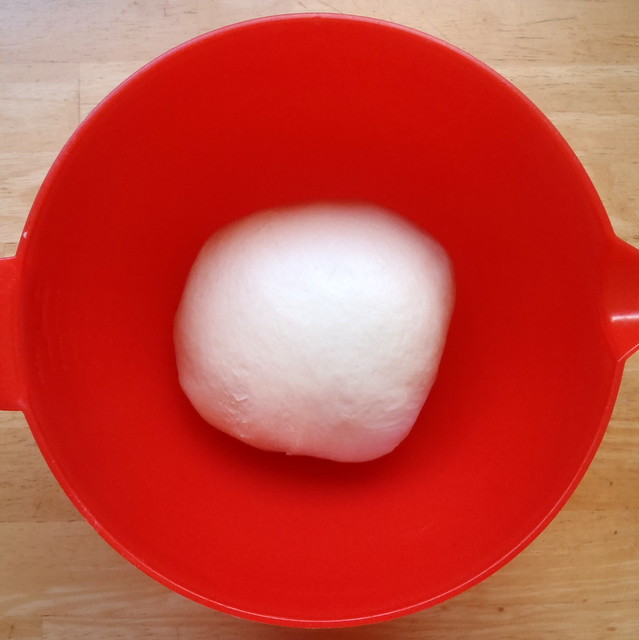
Run a bowl scraper around the sides and bottom of the bowl to
release the dough and turn it out onto a work surface. Stretch the left
side of the dough outward and fold it over the center, then stretch and
fold the right side over to the opposite side, as if you were folding a
letter. Repeat the process, working from the bottom and then the top.
Turn the dough over, lift it up with a bench scraper, and place it seam
side down in the prepared bowl. Cover the bowl with plastic wrap or a
dish towel and let sit at room temperature for 1 hour.
Line the quarter sheet pan with parchment paper. Uncover the
dough, run the bowl scraper around the sides and bottom of the bowl to
release the dough, and turn it out onto a lightly floured work surface,
disturbing the structure as little as possible. Gently but firmly pat
the dough into a rectangle about 10 x 7 ½ inches, pressing any large
gas bubbles to the edges and then out of the dough. Transfer to the
sheet pan, cover with plastic wrap, and freeze for 20 minutes.
To encase the butter and roll the dough: Lightly flour the work
surface and a heavy rolling pin. Turn the dough out onto the work
surface and lightly dust the top with flour. Roll the dough outward
from the center, rotating it frequently and flipping and fluffing it
from time to time, adding just enough flour to the work surface, dough,
and/or pin to prevent sticking, until you have a 16 x 7 ½ x ½ inch
thick rectangle.
Lay the block of butter across the center of the dough. Stretch
and fold over the two longer sides so they meet in the center and pinch
together to seal. There should be no exposed butter at the top of the
block, but you will see the butter on the sides.
For turn 1: Using the rolling pin, press down firmly on the dough
across the seam from one side to the other to expand the dough. Turn
the dough so a short end faces you. Roll to expand the length of the
dough, flipping, fluffing, and turning the dough over and adding flour
only as needed, until you have a rectangle ~22 x 9 inches and 3/8 inch
thick.
Fold the bottom third of the dough up as if you were folding a
letter. Fold the top third down to cover the bottom third. Turn the
block 90 degrees so the dough resembles a book, with the opening on the
right. You will continue this pattern with each roll, and keeping the
opening on the right will help you remember how to position the dough.
You have completed your first turn; gently press a finger into a corner
to mark it. Return to the sheet pan, cover with plastic wrap, and
freeze for 20 minutes or until the dough has stiffened but is not hard.
For turn 2: Lightly dust the work surface with flour. Place the
dough on the work surface with the opening on the right. It is
important to work with the dough as quickly as possible, but not at the
risk of exposing the butter. Pressing on the dough will warm the
butter; if it is too cold, it will shatter rather than spread as you
roll it. Expand the dough by pressing down firmly with the rolling pin,
working up the length of the dough. If the dough cracks at all along
the edges, stop and let it warm slightly at room temperature. Then roll
out the dough as you did before to a 22 x 9 x 3/8 inch thick rectangle
and repeat the folding. Turn the block 90 degrees, so the opening is on
the right. Gently press 2 fingers into a corner to mark the dough.
Return to the sheet pan, cover with plastic wrap, and freeze for 20
minutes or until the dough has stiffened but is not hard.
For turn 3: Repeat all of the steps for turn 2 and mark the dough with 3 fingerprints.
To finish the dough: Line a sheet pan with parchment paper and
lightly dust the work surface with flour. Place the dough on the work
surface with the opening on the right.
It is especially critical at this stage that the dough remain cold;
freeze as needed. Lightly dust the top of the dough and roll it
outward from the center, flipping, fluffing, and rotating the dough and
turning it over, adding only enough flour to the work surface, dough,
and/or pin as necessary to prevent sticking. Roll the dough out to 24 x
9 inches.
Cut the dough crosswise in half, making two 12 x 9 inch
rectangles. Stack on the sheet pan with a piece of parchment paper
between them, cover with plastic wrap, and freeze for 20 minutes, or
until the dough has stiffened but is not hard.*
Spray two sheet pans with nonstick spray and line with parchment paper (or just use 1 sheet pan if only using half the batch of dough).
Lightly flour the work surface. Remove one piece of dough from the freezer and position it on the work surface with the short end towards you; transfer the second piece of dough (if using at this time) to the refrigerator. Roll the dough out to a rectangle 19 x 9 inches.
Turn the dough so that a long side is facing you and trim it to 18 inches long. Trim the remaining sides only as needed for straight edges.
Cut the dough in half, crosswise, so that you have two squares, about 9 x 9 inches wide. Then cut each squash in half so that you end up with four rectangles. Cut each rectangle diagonally so that you end up with 8 right triangles.
Hold one triangle up by the base with one hand and, using your fingertips, gently pull the dough until it is stretched to about 12 inches.
Put the dough on the work surface, with the base of the triangle close to you. Fold over the corners to the center of the base and roll the dough up from the wide end to the tip. Put on a prepared sheet with the tail tucked under. Press down slightly, flattening the croissant just enough so that it will not roll on the pan. Repeat with the remaining 7 triangles of dough, spacing them evenly on the sheet pan.
Remove the second piece of dough from the refrigerator, and, if necessary, let sit at room temperature until warmed enough to roll, then repeat to make 8 more croissants.
Brush the croissants with the egg wash. Cover the pans with plastic tubs or cardboard boxes and let proof for about 2 hours.
Position the racks in the upper and lower two-thirds of the oven. Preheat to 350°F.
Brush the croissants again with egg wash. Bake for 35-40 minutes, rotating the pans once halfway through baking and separating the croissants if they are touching, until the tops are a rich golden brown and no portions, particularly between the layers, look undercooked. Set the pans on a rack and cool completely.
The croissants are best the day they are baked. Thomas Keller suggests freezing the baked croissants in several layers of plastic wrap if you have any leftover, but I actually prefer to freeze the croissants after they have been shaped and before they have proofed. Then, the night before you want to eat the croissants, you can move them to the refrigerator to thaw and rise slowly. The next morning, let them come to room temperature, brush with egg wash, and then bake according to the directions above. Or let them thaw and rise at room temperature if you only have a few hours.
As you can see in the picture above, I only baked 4 of the croissants in the first batch and didn't do a great job of shaping them (he wasn't kidding about the need to tuck the tail of the croissant underneath). They still shattered nicely when I took a bite but were a little bland in taste. My friend, Tammy, encouraged me by reminding me that more flavor would develop in dough that was sitting in the freezer, and she was right!
The next day I thawed out and baked another batch of croissants, and they definitely had a deeper flavor. As an added bonus, they also rose a lot more. So I would definitely encourage you to let the dough sit in the refrigerator overnight (or in the freezer if you're not baking them the next day) if you have the time, hence the 2.5 days needed to make a batch of croissants.
*I actually saved one of the two laminated sheets in the freezer to make pains au chocolat (chocolate croissants). If you have leftover baked croissants, you can use those to make almond croissants the next day! And for the really ambitious, you can also make cronuts out of this dough.
Next: Almond Croissants
Previously: Spicy Tuna with Crispy Sushi Rice
Three years ago: Banana Bread Yeasted Waffles
Four years ago: Nian Gao (Mochi Cake), Red Bean Ice Cream


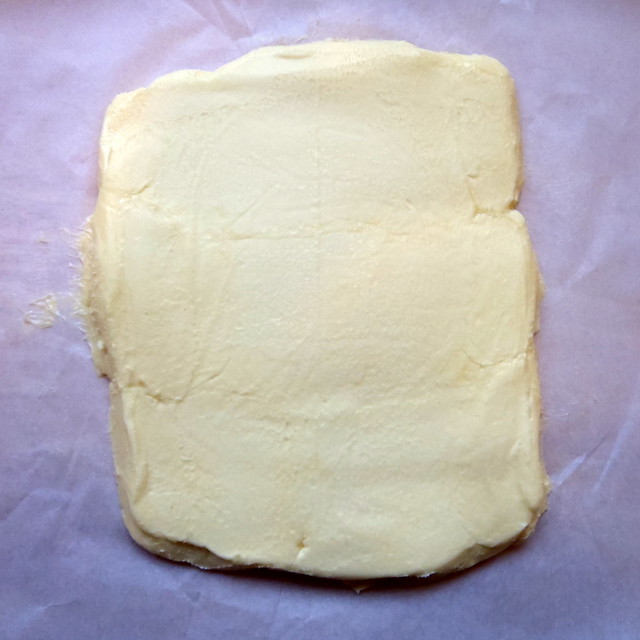


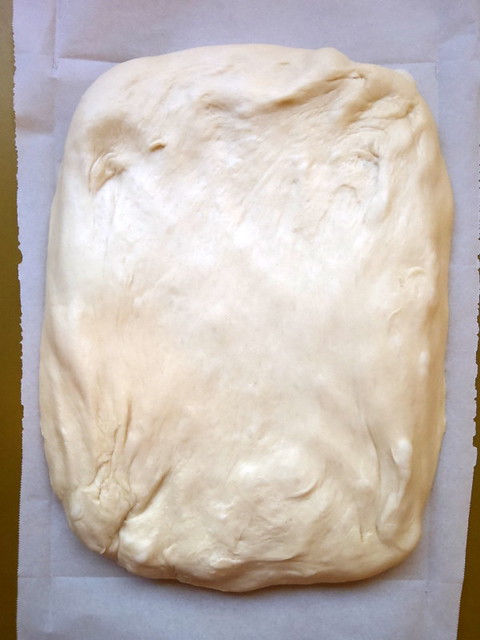


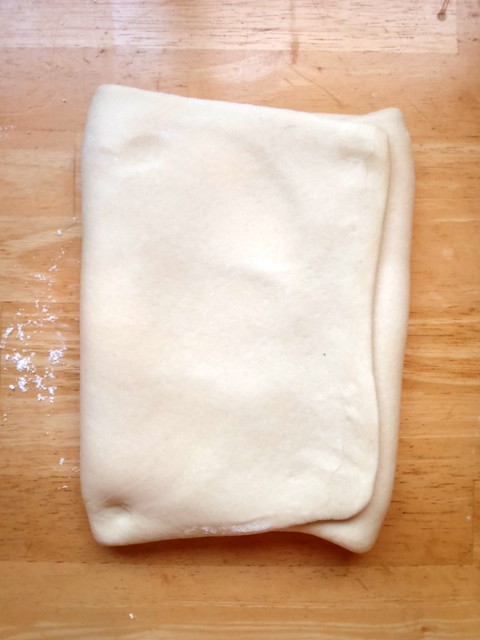
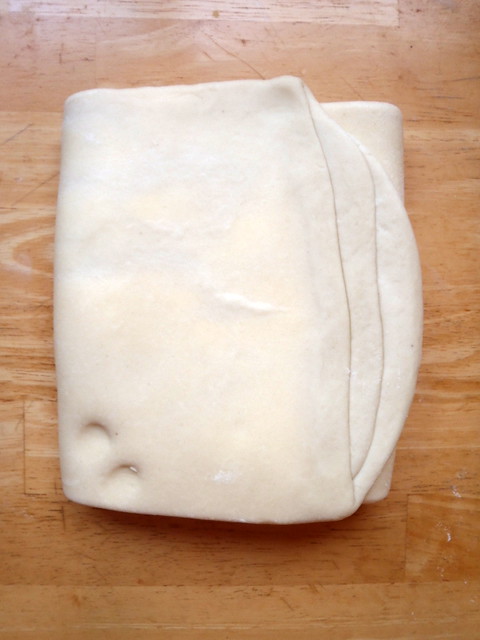

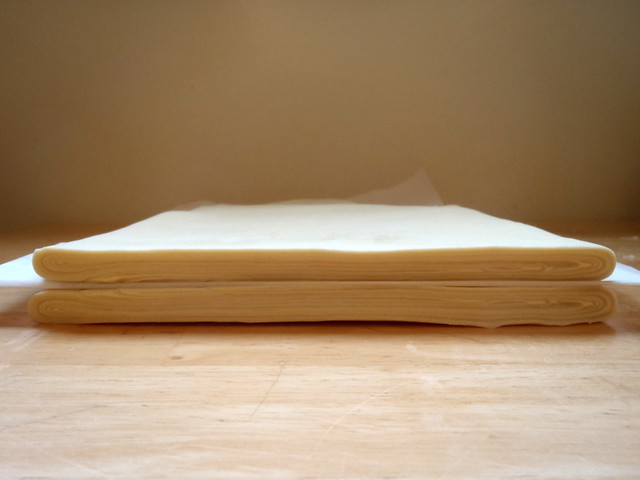

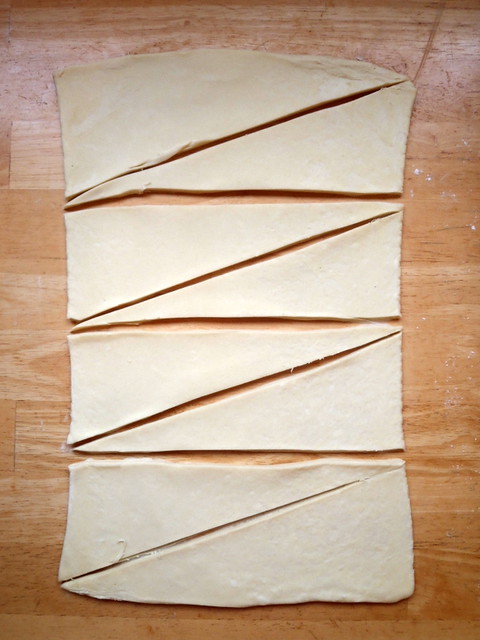
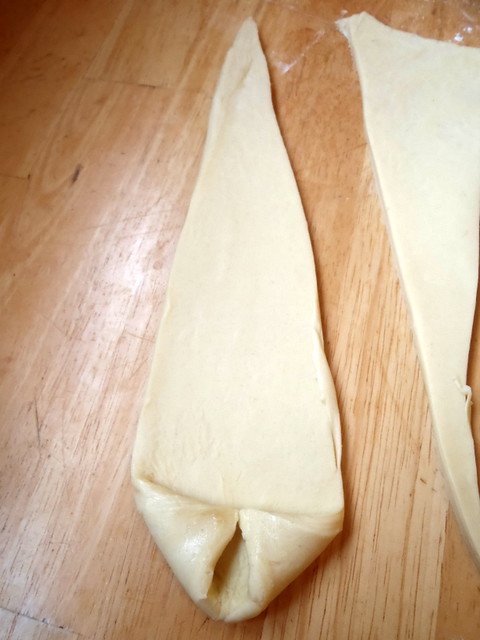

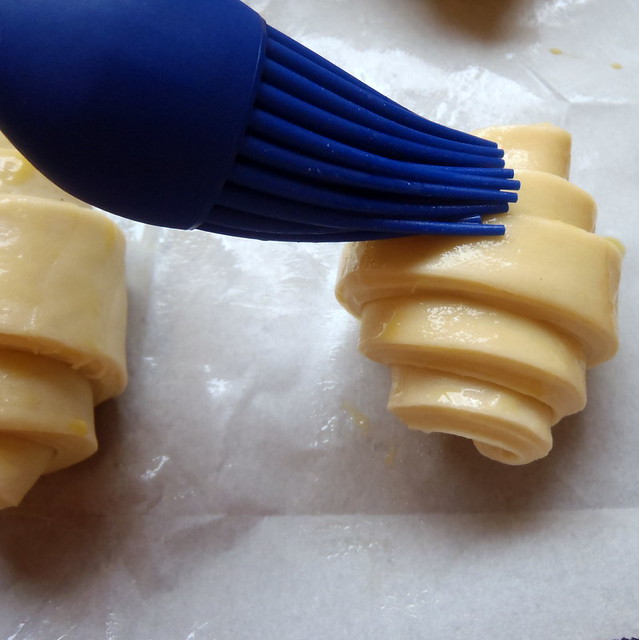




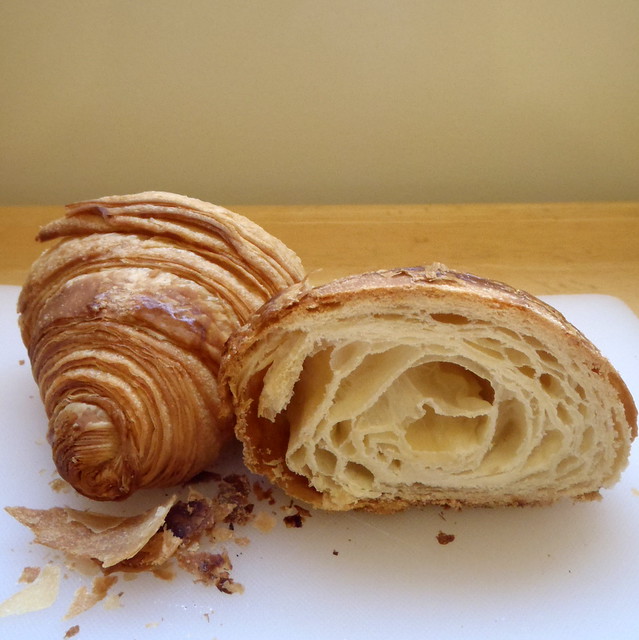





I can't believe you made all these croissants! I'm all about hard work in the kitchen but the process looks so daunting, even for me. :) In any case, they look GREAT!!!
ReplyDeleteThanks! It was daunting, which is why I waited until a super-long holiday to make them!
DeleteJoy, your croissants look fabulous!!!! I am in love with them! Look at that laminating..so professional! I am going to have to try this again, you've totally motivated me to get over my last failure. LOVE IT!
ReplyDeleteThanks and good luck!
Deletesorry but you not put the weight of the butter block !!!
ReplyDeletesorry i saw it now 10x :)
ReplyDeleteHello Joy,
ReplyDeleteThank you for posting this recipe! I plan to make it as soon as my diastatic malt powder comes in the mail. For the poolish, is 0.1 g of instant yeast correct? This seems to be a very small amount, however I can see how the mixture can get so bubbly after a long sitting time. Just wanted to double check!
-R.P.
It's been a while since I made these, and I no longer have the book, but as I recall, only a minute amount of yeast was needed for the poolish!
DeleteAh, okay then. I'll keep that in mind as I measure the ingredients. Thank you so much!
DeleteBaking traditional croissants can be really challenging. It requires lot of patience through the whole process. However, it’s all worth it once you make some amazing croissants that your friends and loved ones will enjoy. Thanks for sharing!
ReplyDeleteMegan Anderson @ Cafe Fina
Hi Joy, I just tried this recipe according to your instructions. I tried to keep the dough cool and not over worked, but it came out small and white between the layers on the outside. I was wondering if you could give me some clues as to what gives the croissants that nice brown consistent color on the outside. My croissants actually never got as big as yours. I think this could be due to not proofing them enough, but I thought if it went beyond the 2hr period, it would become over proofed. Any suggestions?
ReplyDeleteI've only made these once so I wouldn't be the best person to answer your questions, but did you use the egg wash?
DeleteYes, I did. Oh well. :/ I will keep doing some research. Thanks for sharing the recipe!
DeleteI tried the recipe again! It came out really well this time and looked beautiful. They aren't bouchon level, but I may need a sheeter and proofer for that. I didn't mix the dough as long to start which allowed the dough to have less tension before I started the folds. This makes it easier to roll out and less likely to be over worked. The other key is to make sure the butter is firm, but not too firm to roll so it remains a sheet and doesn't break into pieces when you start the first turn. Thank you for the recipe!
DeleteI have finished laminating and want to let the dough rest and make my croissants tomorrow. Can I just leave the two halves in the refrigerator or will they proof?
ReplyDeleteI'm not sure, but I probably would have saved them in the freezer and then thawed them out the next day.
Delete